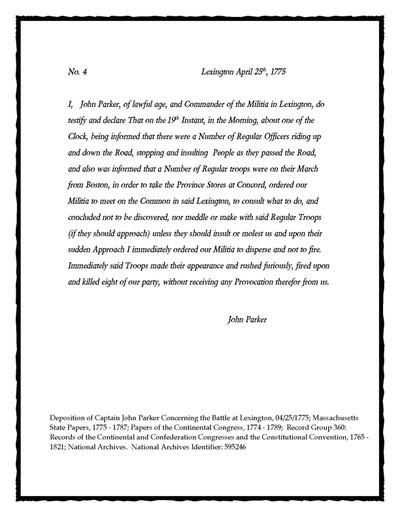Lexington & Concord - April 19, 1775
Apparently, only one map of the skirmishes that occurred in Lexington and then Concord was created, most likely by General Hugh Percy. Percy had remained in reserve at headquarters, but provided reinforcements, fourteen hundred men and 2 cannon, for Colonel Smith who had been ordered by Thomas Gage to march to Concord.
|
"You will march with the Corps of Grenadiers and Light Infantry put under our Command with the utmost expedition and Secrecy to Concord, where you will seize and Destroy all the Artillery and Ammunition, provisions, Tents & all other military stores you can find."
- Thomas Gage - III. |
This map was printed by I. DeCosta. Like the original by Percy, DeCosta's version it includes many of the most noticeable and important towns, roads, waterways and troop positions, both British and Colonial. The map shows "Minutemen" marching from other areas around Boston with the British in retreat as well as the provincial encampments that would soon surround British troops in Boston and force them to evacuate the peninsula.
Title: A plan of the town and harbour of Boston and the country adjacent with the road from Boston to Concord, shewing the place of the late engagement between the King's troops & the provincials, together with the several encampments of both armies in & about Boston. Taken from an actual survey. Contributors: De Costa, J., Hall, Charles, 1720?-1783.
Date: 1775
http://hdl.loc.gov/loc.gmd/g3764b.ar090000
Date: 1775
http://hdl.loc.gov/loc.gmd/g3764b.ar090000
|
Title: "The battle of Lexington, April 19th. 1775. Plate I." (1775)
Author: Doolittle, Amos (1754-1832) The Miriam and Ira D. Wallach Division of Art, Prints and Photographs: Print Collection, The New York Public Library. The New York Public Library Digital Collections. 1775. http://digitalcollections.nypl.org/items/510d47d9-7e71-a3d9-e040-e00a18064a99 |
Title: "Plate II. A view of the town of Concord." (1775)
Author: Doolittle, Amos (1754-1832) The Miriam and Ira D. Wallach Division of Art, Prints and Photographs: Print Collection, The New York Public Library. The New York Public Library Digital Collections. http://digitalcollections.nypl.org/items/510d47d9-7eae-a3d9-e040-e00a18064a99 |
Who fired the the famous "The shot heard 'round the world"? Amos Doolittle engravings certainly point to the British firing first, but this is uncertain.
Depositions were taken by both sides, as nobody wanted be responsible for starting a war. Captain John Parker of Lexington, was in charge of the militia who had gathered on Lexington Green on the evening of April 18th and the morning of April 19th. At the request of the Massachusetts Assembly, he provided this deposition, one of a series of depositions taken shortly after the incident. Accounts of British soldiers and farmers in the countryside also exist.
Depositions were taken by both sides, as nobody wanted be responsible for starting a war. Captain John Parker of Lexington, was in charge of the militia who had gathered on Lexington Green on the evening of April 18th and the morning of April 19th. At the request of the Massachusetts Assembly, he provided this deposition, one of a series of depositions taken shortly after the incident. Accounts of British soldiers and farmers in the countryside also exist.
Deposition of Captain John Parker Concerning the Battle at Lexington, 04/25/1775 (National Archives Identifier: 595246); Massachusetts State Papers, 1775 - 1787; Records of the Continental and Confederation Congresses and the Constitutional Convention, 1765 - 1821; Record Group 360; National Archives. http://www.archives.gov/historical-docs/todays-doc/?dod-date=419










